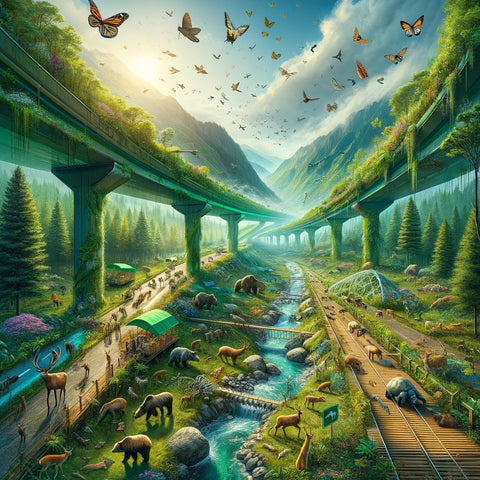The Importance of Wildlife Corridors
Wildlife corridor projects - hope for biodiversity conservation future
Wildlife
When it comes to conserving biodiversity and a broad range of species, wildlife corridor efforts are among the most innovative and successful tools available today. Because these corridors connect ecosystems that were once separated, animals have greater room to move, feed, and breed inside them. Protecting animals while demonstrating the interconnectedness of all life is possible via the creation and maintenance of these channels.
The awe-inspiring methods in which animals navigate diverse habitats sparked my interest in wildlife corridors. An story on the monarch butterfly's annual migration caught my attention. The butterflies' life depends on this perilous and generationally-long trip, which covers hundreds of miles. Consequently, I immersed myself in researching how the disruption of these natural pathways has caused population dispersal, decreased genetic diversity, and endangered several species.
Wildlife corridors are a remarkable illustration of how human resourcefulness benefits the environment. Animals can traverse these corridors in a variety of ways, including underpasses to avoid traffic, green bridges to avoid huge areas of deforestation, and riverine routes to avoid altered rivers. Every effort contributes to the larger goal of conservation by catering to particular ecosystems and the species they support.
One of the most moving stories I heard was about a highway overpass in a national park that was built specifically to let animals cross the road. Squirrels, birds, bears, and deer were among the numerous species who relied on this path, despite initial skepticism. More than merely the number of species that utilized it, this passage proved that nature can bounce back and even thrive when allowed the opportunity.
Taking involved in local wildlife corridor activities has been a really eye-opening experience. After taking part in citizen science projects that monitor animal migrations and planting native plants to aid pollinators' movement, I've learned to value community and collaborative effort even more. Through these endeavors, the value of education and awareness has also been highlighted. Alterations to human behavior and development strategies are often required to maintain these passageways operational and undamaged.
The varied environments that wildlife corridors traverse are reflected in the vast array of challenges they face. Funding issues, bureaucracy, and the sheer quantity of habitat fragmentation need for innovative solutions and persistent advocacy. Nevertheless, the progress made thus far may be used as a roadmap to keep conservation efforts going. By prioritizing connectivity and rehabilitating habitats, we can ensure that wildlife corridors continue to play a crucial role for species globally.
I hope that by sharing my story of wildlife corridor discovery and activism, I might inspire others to recognize the importance of these natural conduits. Funding conservation groups, becoming involved in community projects, or just spreading the news are all ways that any of us can help keep these vital links in the web of life intact.






Leave a comment